Close Embrace Elements of Tango
This site is all about helping you to create a more desirable Close Embrace Dancing Experience thru our 800 videos and articles (not including all the other stuff) on Tango Topics for you to watch and learn from. It’s not just the videos, but the articles that contain the most of what you need to know to elevate your dance. We’re not trying to sell you videos here, but instead to inform and engage you to educate yourself wherever possible.
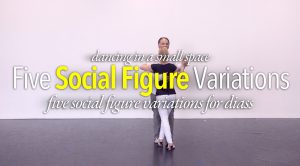
Five Social Figures Variations – DIASS Edition
What is “Dancing In A Small Space” (or ‘DIASS’ as Tango Topics refers to this idea) ! There are two parts to the answer to this question: First, in it’s simplest form, it’s all about the vocabulary and engaging Five pieces of Tango vocabulary. The Five Pieces ? 1.) The 5 of the 6 Ways of Walking. 2.) Milonguero Ochos (sometimes referred to as ‘Lazy’ Ochos)3.) Milonguero Turns (not the Follower’s Molinete).

Dancing In A Small Space – Extended
What is DIASS: EVE ? In short, this is a series of 8 pieces of tango vocabulary that tangotopics has identified to be used as accent or “spice” in addition to Five Social Figures (and its variations) as well as volume 1 and volume 2 of Dancing In A Small Space (DIASS) in Argentine Tango.
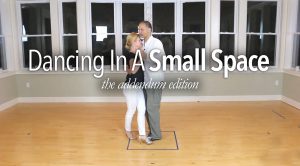
Dancing In A Small Space – Addendum
First, in it’s simplest form, it’s all about the vocabulary and engaging Five pieces of Tango vocabulary. The Five Pieces ? 1.) The 5 of the 6 Ways of Walking. 2.) Milonguero Ochos (sometimes referred to as ‘Lazy’ Ochos)3.) Milonguero Turns (not the Follower’s Molinete). 4.) Back and Forward Crosses (not the Argentine variety, there’s no space!)…
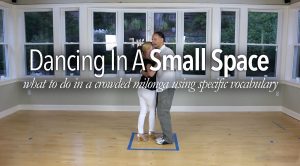
Dancing In A Small Space – Primary
What is a ‘Dancing In A Small Space’ ? There are two parts to the answer to this question: First, in it’s simplest form, it’s all about the vocabulary and engaging Five pieces of Tango vocabulary. The Five Pieces? 1.) 5 of the 6 Ways of Walking. 2.) Milonguero Ochos (sometimes referred to as ‘Lazy’ Ochos). 3.) Milonguero Turns (not the Follower’s Molinete). 4.) Back and Forward Crosses (not the Argentine Cross, there’s no space!)…

Five Social Figures
What are the Five Social Figures ? In its really basic form, it’s the 5 things that we do all night long with every dance partner. 1.) Walking. 2.) Ochos. 3.) Turns. 4.) Crosses. & 5.) The Cortados.

Milonguero Turn ‘Trick’.
What is the Milonguero Turn Trick ? First and foremost, the Trick itself isn’t a ‘trick’, it’s more of a reliance on Follower Default behaviors. Secondly, the ‘Trick’ only solves the first major hurdle of the Turn itself – The Follower’s Back Cross.
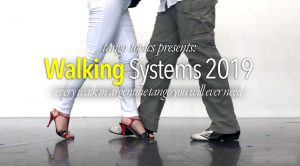
Walking Systems
What are Walking Systems ? These are 18 different ways that we can walk in Argentine Tango. Not the how-we-walk, or the mechanics of how we walk but the multiple methods to the ways in which we might want to walk. The ideas comprise a composite or overall vantage point that no matter what situation one is in, there is a walking solution for that situation.
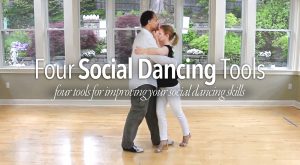
4 Social Dancing Tools
What are the ‘Four Social Dancing Tools’ ? First, what is a ‘tool’ as we’re defining it here ? A tool is a commonly used element that, and really it’s a transition from one thing to the next, that we use ubiquitously and don’t really pay a lot of attention to because it’s a stepping stone to the really cool thing we have in our minds. This is a tool. It’s the thing we use to make something else. Think of it as a Foundation, or a maker tool. A tool to make other things.

Crossing Sacada Turn
What is a Crossing Sacada Turn ? In its simplest form it’s nothing more than a series of Simple Sacadas that are chained together that just so happen to utilize the Follower’s Molinete or ‘Turn’, which employs the Argentine Cross as it’s basis for entry. While the turn can be done without this entry point, it loses it’s ‘elegance’ by without using the Argentine Cross.
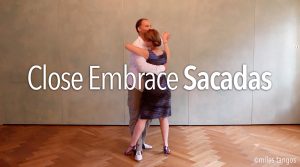
Close Embrace Sacadas
When we’re first starting out with Tango, both roles see the idea of a sacada as cool, flashy, or impressive. And they are until you realize one simple, but immutable, fact: They’re illusions…of walking technique. The Sacada happens due to an intersection of the Follower’s walk into the Lead‘s or vice versa. At the same time, the Sacada is usually relegated to something that is done in open embrace and/or thought of as ’nuevo tango’ vocabulary.
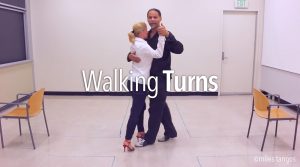
Walking Turns
What is a Walking Turn ? In it’s simplest form, it is exactly what it sounds like, a turn where the Lead is walking in a very tight circle with their Follower. However, note the operative words there ‘simplest form’. Meaning or implying that there are is a level of complexity to this turn. And that’s putting it mildly. The Walking Turn has some tricks up its sleeve. Meaning that you can quite easily augment it with the 6 ways of walking to change it and/or spice it up a bit. The real trick of the turn is that it can be done in close or open embrace, with any partner, regardless of style and yes, it can work within the line AND lane of dance.
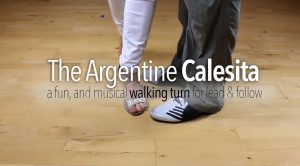
The Argentine Calesita
What is an Argentine Calesita ? The word “Calesita” roughly translates as Carousel or in English, a ‘Merry-Go-Round’. Anytime the you see a ‘sita’ or ‘cita’ ending on a Spanish word, it means that whatever object is being modified is small, or made smaller, tiny. So this is a small carousel, or a small ‘Merry-Go-Round’. The Argentine Calesita is a basically a small turn! It’s nothing more than a variation on a El Giro De Caminando or The Walking Turn.

Contortion
You see so many different ideas of dancing tango that it sometimes very hard to differentiate desirable from the undesirable. That unless you teach you’re not going to see these issues and need to be reminded of them, frequently so that you stop co-creating these less than desirable issues. ‘Contortion’ is twisting your body, then placing your body, and further still compressing (squeezing) your partner’s body into you, into a physiologically untenable position, and staying there for the length of a song. Then starting the next song in the tanda from a clean position, and then starting to slide into the contorted position. This is ‘Contortion’.
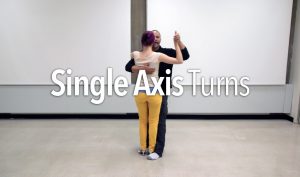
Single Axis Turns
The Single Axis Turn is tango specific language to describe a type of turn where the shared axis (that’s the ‘single’ part) movement between the partnership results in a deliberate turn or rotation, more a rotation than anything else. In much the same way that a Volcada is a shared axis movement, the Single Axis Turn is exactly the same in that respect. However, where as in the case of the Volcada, where the partnership goes towards each other, in this case, they go away.

8 Tips To Desirable Tango
So how do you get to the effortlessness of the dancers above ? Below are 8 tips towards that goal. It is not the only pathway, and this by no means is an exhaustive list of what has to happen, but it is a good starting point. When reading through these points there is something that you absolutely must keep in mind, that you must not forget. Most of these points (except the musical one) come from a place of self-honestly.
